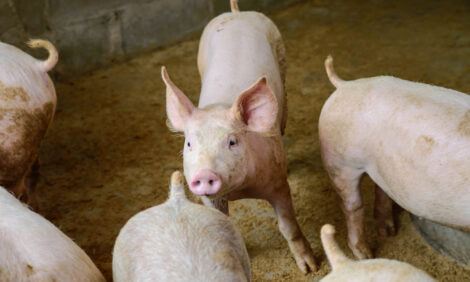



This Week's Pig News Round-Up
ANALYSIS - With new outbreaks of African swine fever (ASF) announced recently in Russia and South Africa, the disease is becoming a global threat, writes Jackie Linden, senior editor of ThePigSite. Also in the news in the last week are issues over animal welfare during transportation in the EU and a forecast increase of 1.9 per cent in pig meat production in the US this year compared to 2011.Recently announced outbreaks of African swine fever (ASF) in three regions of Russia have put Belarus and Kazakhstan on alert for the disease, and there have also been outbreaks in Uganda and in the last week, in South Africa.
At the end of last week, the Russian veterinary authority announced three new ASF outbreaks in different regions – Astrakhan region, Krasnodar Kray and Stavropol Kray – starting between 29 December and 6 January.
The Astrakhan outbreak involved one wild boar, which was destroyed. The case offers a warning, however, because it is a region not affected before and it borders Kazakhstan. Furthermore, many of the previous reports of ASF in Russia appear to have spread among the wild boar population and then to domestic pigs.
In December last year, Kazakhstan imposed restrictions on pork imports from Russia, and following the recent outbreaks, Belarus is also now on alert.
The other recent ASF outbreaks in Russia were in domestic pigs on farms in the Black Sea area of south-western Russia. They are notable for the extremely high toll of pigs that had to be culled. At one farm, at Timoshevsky in Krasnodar Kray, 167 pigs died and the remaining animals – more than 30,000 – were destroyed. The farm in Stavropol Kray was smaller but more than 4,000 pigs have been destroyed there.
To add to Russia's pig health difficulties, classical swine fever has been confirmed recently in two new outbreaks of classical swine fever, in the regions of Vladimir and Smolensk.
ASF is not only affecting eastern Europe. The veterinary authority in South Africa has reported an outbreak of the disease at a farm in Mpumalanga province. On 3 January, 35 cases were identified as sick at an abattoir in Gauteng. Of these, 28 died and the remaining 52 pigs in the herd have been destroyed. The source of the outbreak has is still under investigation as the outbreak occurred outside the country's ASF control zone.
Concern is growing again over the way livestock is transported both for slaughter and as live exports.
In Europe, the issue seemed to have been put to rest when the animal welfare in transport rules came into effect in 2007. However, a report from the European Commission towards the end of last year called for more action to be taken, whilst while recognising the advances that have been made in the welfare of animals in transit.
The report then found that there were three shortcomings in the way the regulations were being applied: the poor enforcement of legislation; market distortions created by the divergent interpretations of the rules; and the potential of the navigation system has not been fully exploited.
Over the last week, further concerns about the transport of animals in Europe were raised over the export of livestock to Turkey. More than one million animals were exported to Turkey last year and out of checks on 158 vehicles, 67 per cent were found to have broken the EU regulations in terms of overcrowding, inadequate ventilation and/or lack of water.
The findings led to howls of anguish from animal welfare organisations and a call for live exports to Turkey to be suspended. The Commission has said that it is not possible for it to impose a suspension unilaterally, but it has started to take action and hold negotiations with the relevant parties.
CME has upgraded the economic outlook in the US in 2012. Economist, Blu Putnam, says US economic improvements in 2012 will start with real GDP forecast to grow around 3.5 per cent to 4.0 per cent.
USDA's January World Agricultural Supply and Demand Estimates (WASDE) report was noted for its larger-than-expected estimate of 2011 corn production and 2012 ending stocks. March, May and July corn futures were down the limit last Thursday (12 January), according to Ron Plain of thr University of Missouri.
The report also raised USDA's estimate of 2011 and 2012 pork production, which is for 2012 pork production will be up 1.9 per cent from 2011. They are forecasting 2012 hog prices to average only $1 lower than in 2011, thanks in large part to a forecast 2.8 per cent drop in the production of competing meats.








